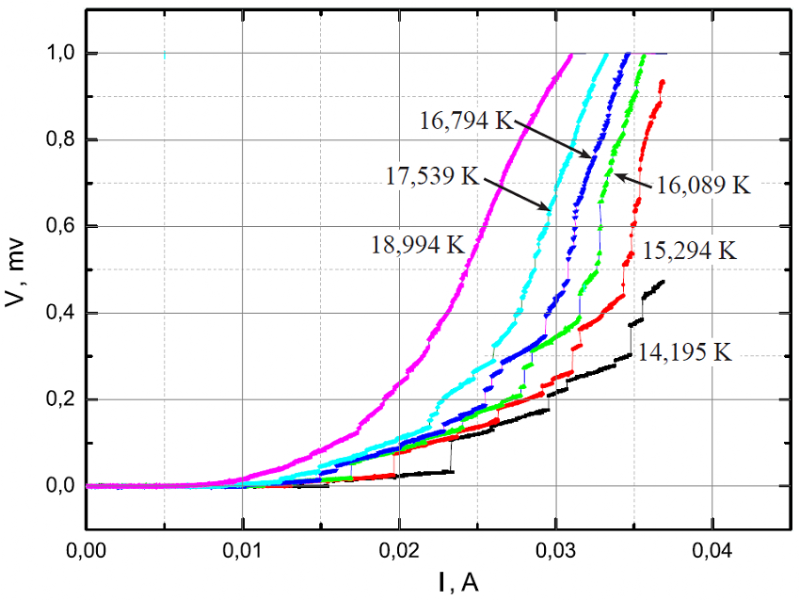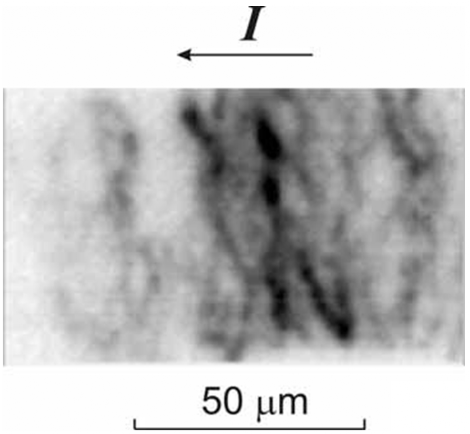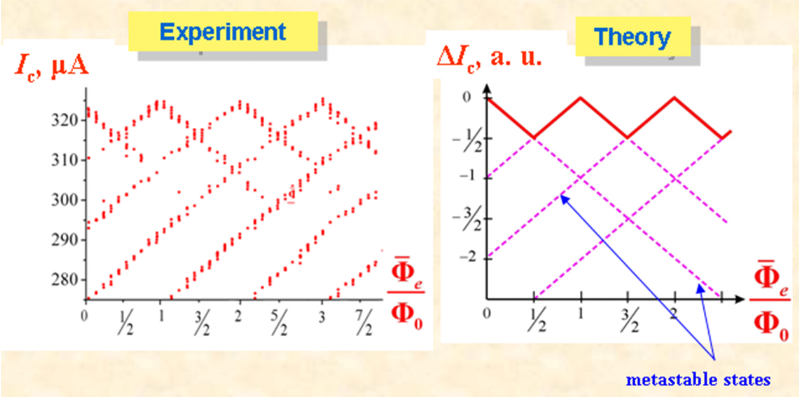Research
Non-equilibrium effects and mechanisms of the resistive state of bulk and thin film superconductors
A. G. Sivakov (Group Leader), A. S. Pokhila, A. E. Kolinko, S. A. Kruhlov
Low temperature scanning laser microscopy of superconductors
We develop the Low Temperature Scanning Laser Microscopy as a spatially resolved method of testing superconducting parameters in bulk superconductors, thin films superconductors and superconducting devices. We have used low temperature scanning laser microscopy to visualize the phase-slip lines in wide superconducting films.

Fig.1 Generation of PSLs in a uniform 30µm wide Sn strip induced by the bias current increasing gradually from (a) to (d). Images (a), (b), and (c) are taken at the 1-st, 2-nd and 3-d steps of IV-curve. Image (d) is obtained in a high current region.
Laser scanning microscopy of superconductive parameters of multi-band superconductors
Current-voltage characteristics of
iron-containing chalcogenide FeTe films and MgB2 were
investigated at different temperatures and the LTSLM images of resistive state
were obtained. No difference between behavior of multiband and traditional superconductors
in the resistive state was obtained.

Fig.2 The voltage-ampere characteristic of the sample (a), its initial part (b) and the images of the LSM-responses which have been obtained at different currents through the sample (c).

Fig.3 The family of the IVCs MgB2 film at different temperatures.

Fig.4 SLM images of PSL in MgB2 film.
LTSM investigations of HTC thin films
Vortex motion in polycrystalline HTC thin films was investigated. Local critical currents suppress due to disorientation of the grains and local defects was obtained.

Fig.5 Half-tone dc voltage response map of polycrystalline YBCO film with percolative current flow through a maze of weak links between grains at T < Tc. The arrow denotes current flow direction.

Fig.6 250x250 µm2 2-D LSM dc voltage image of the resistive state in a YBCO strip fragment induced by transport current I=140mA at temperature T=88.7K: (a) an artificial linear defect (crack) is present near the bottom edge, (b) the second laser beam generates additional inhomogeneity. The strip width is 200µm, it is indicated by arrows and outlined by dashed lines.
Oscillations of critical superconducting current in thin doubly-connected Sn films in an external perpendicular magnetic field
We provided experimental and theoretical studies of critical current oscillations in thin doubly-connected Sn films in an external perpendicular magnetic field. The experiments were performed on samples that consisted of two wide electrodes joined together by two narrow channels. The length of the channels l satisfied the condition l >> ξ (ξ is the Ginzburg–Landau coherence length). At temperatures close to the critical temperature Tc, the dependence of the critical current Ic on average external magnetic flux Φe has the form of a piecewise linear function, periodic with respect to the flux quantum Φ0. The amplitude of the Ic oscillation at a given temperature is proportional to the factor ξ/l. Moreover, the dependence Ic = Ic(Φe) is found to be multivalued, hence indicating the presence of metastable states. Based on the Ginzburg–Landau approximation, a theory was constructed that explains the above features of the oscillation phenomenon taking a perfectly symmetric system as an example. Further, the experiments displayed the effects related to the critical currents imbalance between the superconducting channels, i.e., shift of the maxima of the dependence Ic = Ic(Φe) accompanied by an asymmetry with respect to the transport current direction.


